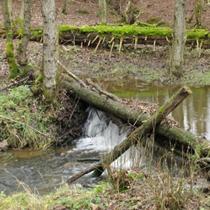Issued: June 2016
Almost ten years ago, the Pitt review of flooding pointed towards a whole-catchment response to flood management. Not just flood defences in urban areas, but changes to upland land use and water flows. Where are we now?
The hard facts
Natural flood management (NFM) seems, well, the natural thing to do.
It surely makes sense to consider whole catchments instead of just engineered defences downstream. But what is the impact of upland land use on run-off and what opportunities are there to hold water back in rural areas before flows threaten urban centres?
The truth is that we can’t be sure. Yet.
Data collected so far has been building a picture of the impact of NFM at a local scale for small rivers or streams and for fairly frequent storm events. There is much less certainty about NFM’s effectiveness for larger catchments and for more extreme storms. To understand that better, we need more time, more experimentation and more flow readings.
Regulators are feeling the pressure and pressing on
The extreme storms of the last few winters have highlighted the need for new solutions and more evidence to back NFM.
- SEPA is providing guidance on the selection and design of NFM (The natural flood management handbook).
- NRW is pushing for flood management based on catchment-wide ecosystems.
- The EA is providing guidance on working with catchment processes (How to model and map catchment processes).
Time for WHS
WHS has provided a national case study. Our NFM hydrological study of the Clwyd catchment in North Wales is highlighted in the EA guidance as a national case study in modelling catchment processes. NRW is also using our findings to inform catchment management policy.
Our study methods included:
- reviewing the NFM options applicable to the Clwyd catchment and assessing the history of land-use management practice to refine a shortlist of options
- using a detailed bespoke hydrological model to estimate the impacts that land-use change and management could have on flood flows (eg. forestation, drain blocking and de-compaction of grazed areas)
- mapping current land use in the catchment and assessing the geology and hydrology to assess where land use and management change could have maximum impact
- engaging with landowners and farmers through an exhibition at the local farmers’ auction market to reality-check our assumptions and gauge farmers’ views on NFM (many farmers were positive about NFM and some had already collaborated to investigate funding options for such measures).
We concluded that a significant reduction in flood flows could be achieved for summer storms (when soils are relatively dry), but the benefits for winter storms are likely to be less significant.
We recommended that flow measurements be undertaken in smaller parts of the catchment to assess the impacts of the measures at a local scale in order to calibrate our theoretical hydrological model.